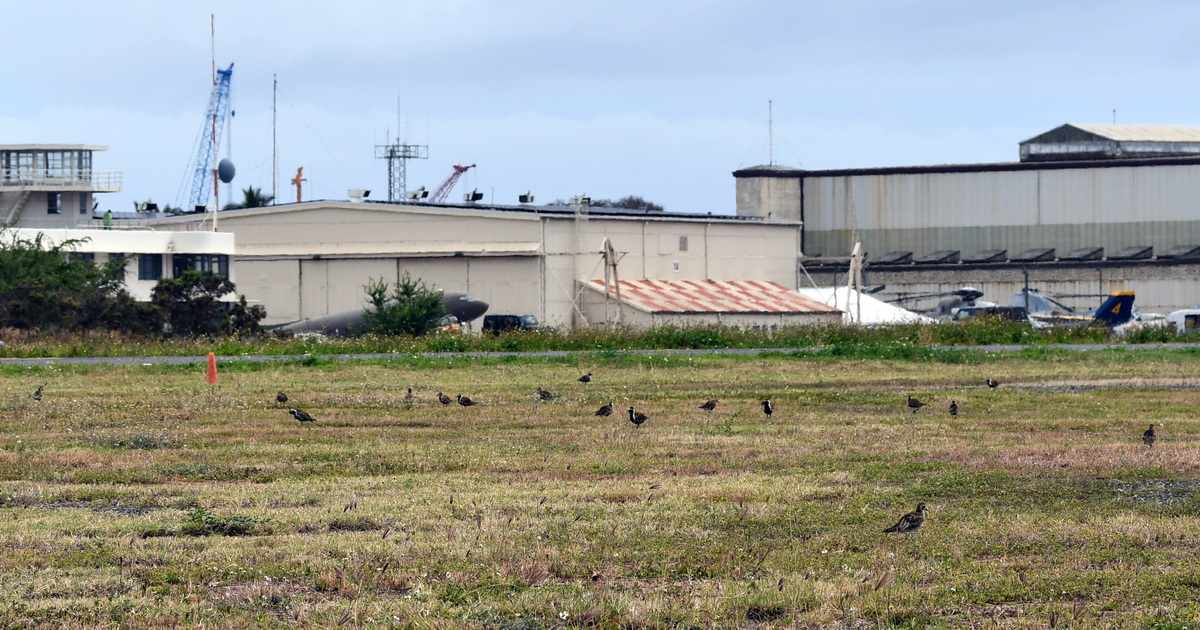
Kōlea gathering at a Ford Island field. ©Susan Scott
April 14, 2024
Yesterday a friend and I spent a pleasant hour on Ford Island sitting in lawn chairs while staring at 38 dots in a dry grassy field. Then we packed up, drove to Tripler Army Medical Center and spent another hour staring at a similar bunch of dots in another grassy field.
This might not sound exciting, but for us kōlea fans, we were whooping it up. It’s April. Time to watch the plovers party.
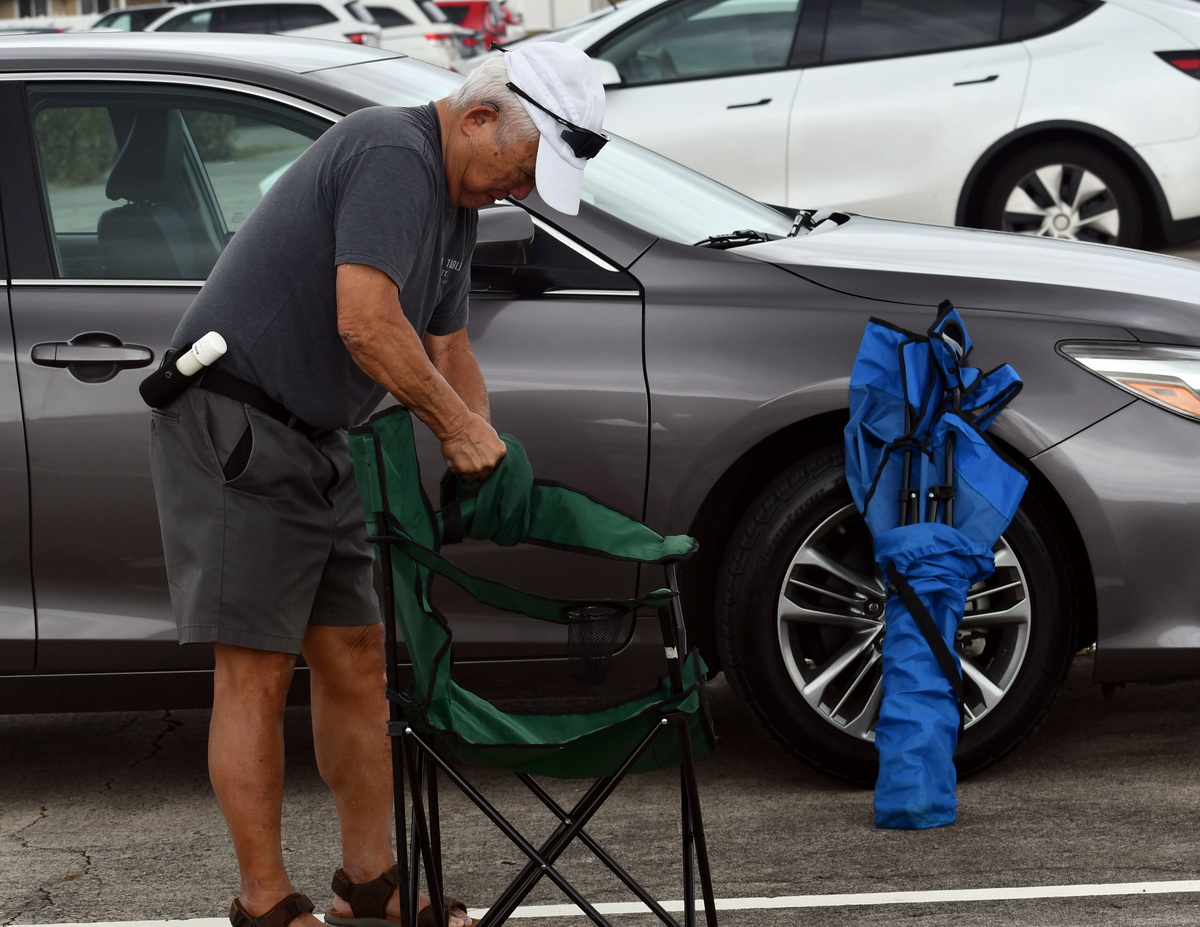
Roger Kobayashi unfolds chairs for our kōlea watch. ©Susan Scott
Okay, the birds aren’t exactly partying. A few pecked around in the ground, and I watched one female take flight and land near a male (photo below. ) But then the two, as well as the rest of the flock, just stood there.
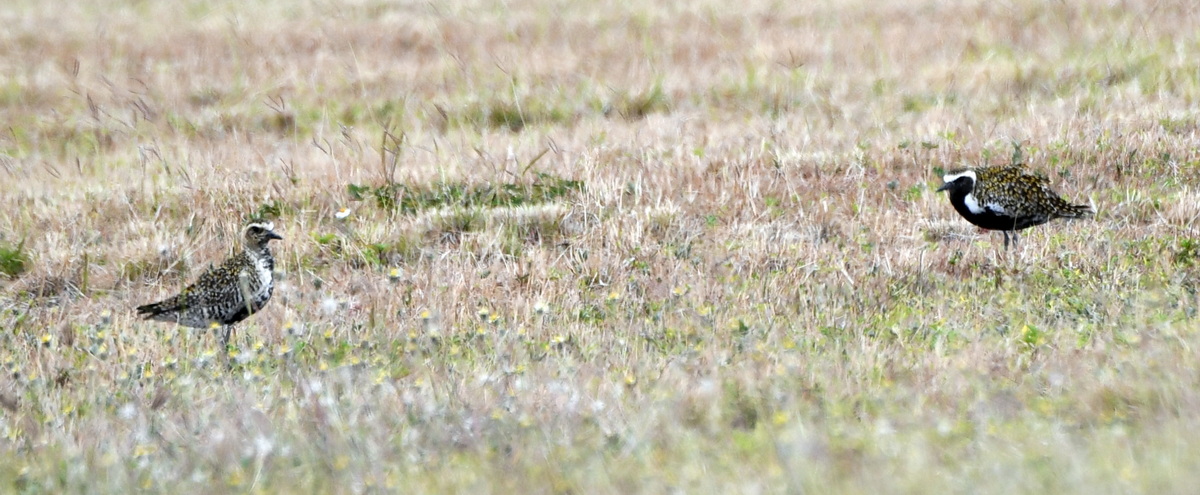
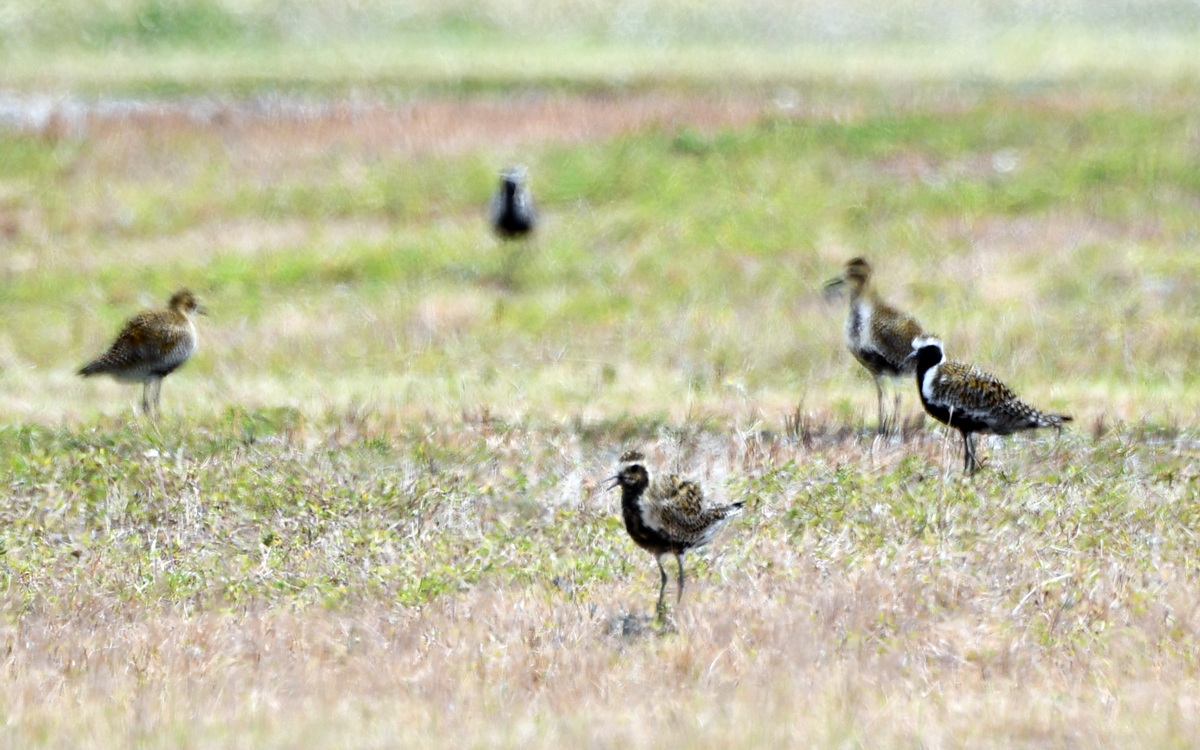
From our distance, the male/female mix seemed about equal. ©Susan Scott
I was there because on April 7th, birder and photographer, Roger Kobayashi, emailed that he saw dozens of kōlea in those two areas, and offered to take me there (military ID required for both places.) Because the birds don’t migrate until late April, and some in early May, we both thought this plover gathering was early.
But there they were, not exactly packed together but a lot closer than we see them all winter. We kept our distance so as not to disturb them.
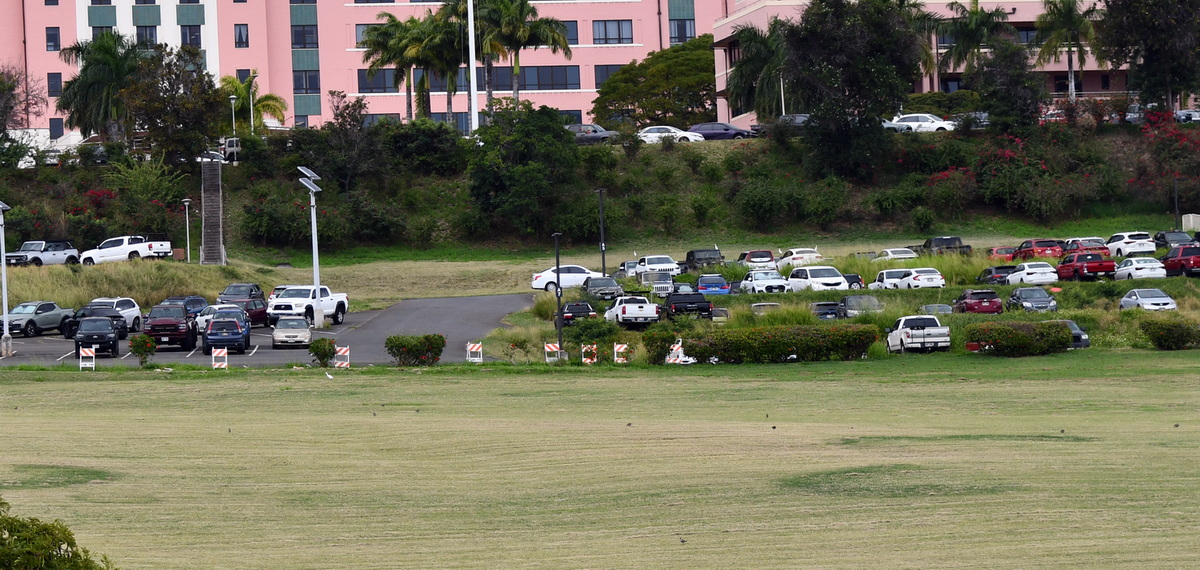
The black dots in this Tripler Army Medical Center (pink building) field are kōlea. ©Susan Scott
As we watched, Roger and I wondered if there was enough food in those fields for that many birds (40 to 50.) Is bug abundance the reason they chose these particular areas? Do the birds return to their winter foraging grounds to keep their weight up? How does each bird know it’s fat enough to make the migration? Where do these flocks go at night? Why gather three weeks early? Are males and females pairing up? Does one bird decide the moment to migrate and the rest follow? Are kōlea gathering in other places now?

After Roger contacted me with the gathering news, I drove to Kualoa Park to see if kōlea are gathering there. They were not. I’ll keep checking. ©Susan Scott
“It’s amazing how many things we don’t know about these birds,” Roger said.
True. But the mystery of migration is part of the fun. It’s thrilling to see our plovers change into their breeding colors and start moving around, because we know the epic undertaking these seven-ounce birds (up from winter weight of four ounces) are about to attempt.
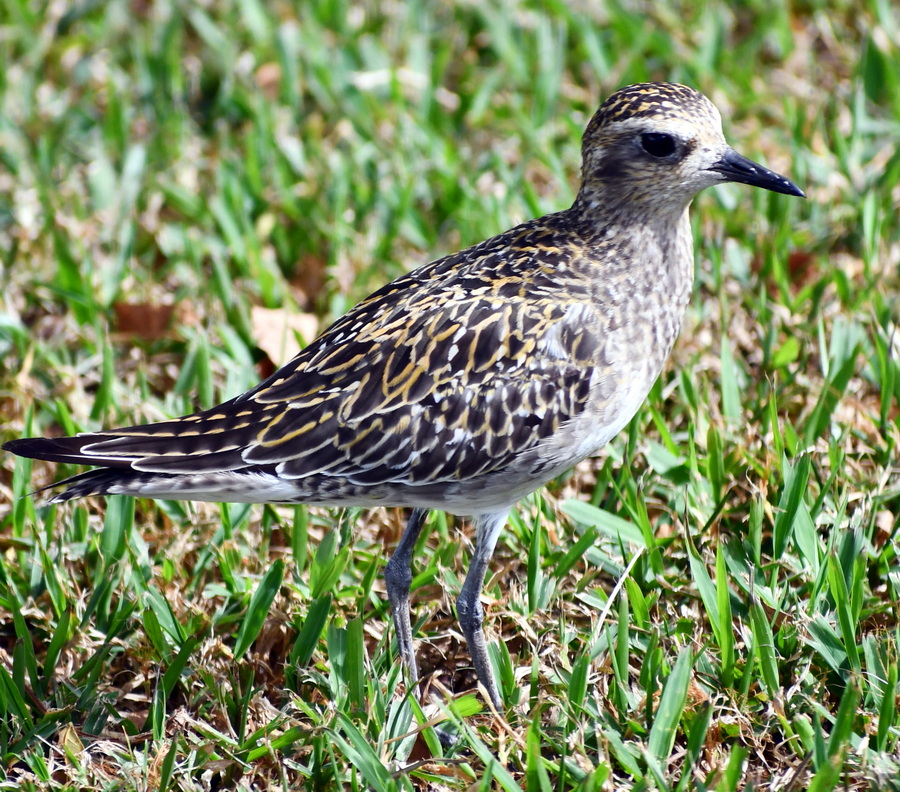
My front yard kōlea, Jake, on October 17, 2023. The first photo I have of him was April 19, 2016, making him at least eight years old. ©Susan Scott
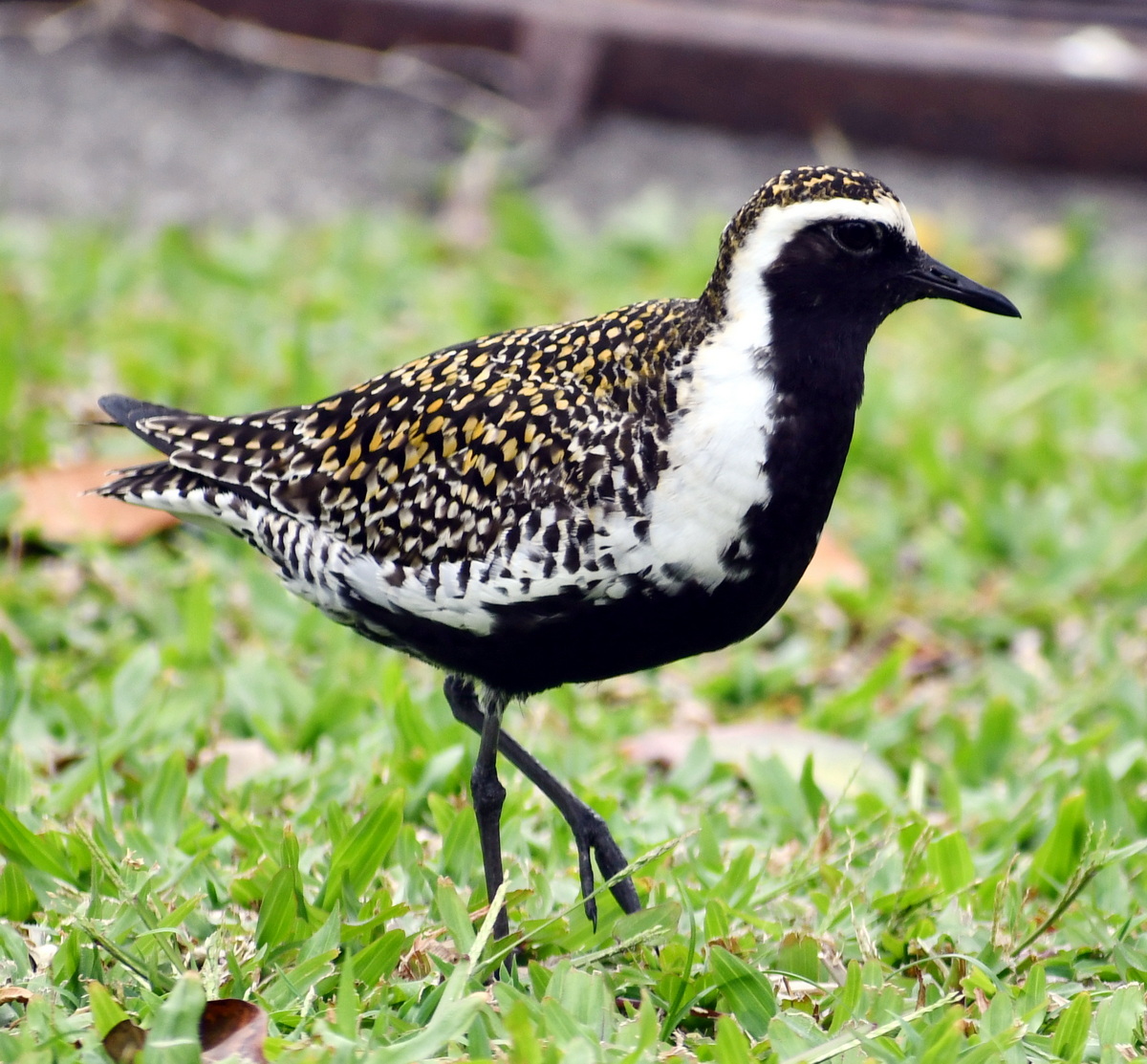
Jake last week (April 11, 2024.) ©Susan Scott
Each will fly 3,000 miles in three days, build a nest, find a mate, lay four eggs, protect the chicks, and then fly, in four days, back to Hawaiʻi. All in three months. As if that isn’t astonishing enough, some individuals repeat these reproductive events for 20 or more years.
Knowing the details of this miracle of nature makes sitting in a lawn chair gazing for hours at dots in the grass a fascinating experience. (Thank you, Roger.)
For another fascinating experience, if enough people are interested, the Hawaiʻi Audubon Society will host a kōlea trip to Nome this June. To learn more, and inquire see Interest survey
Trip flyer or email trip leader Dr. Wendy Kuntz:wkuntz@hawaii.edu or office@hiaudubon.org